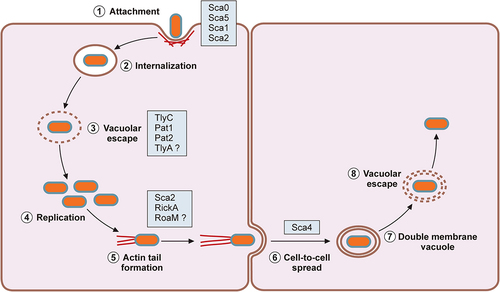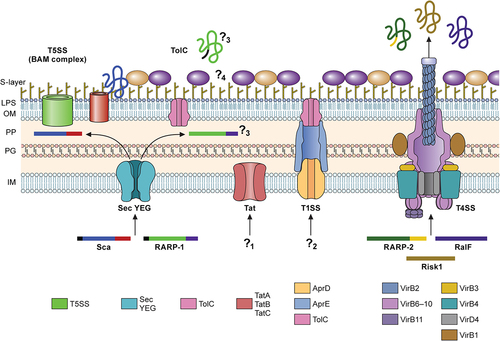Figures & data
Table 1. List of putative rickettsial virulence genes.
Figure 1. Rickettsial intracellular lifecycle.

Figure 2. Secretion systems in Rickettsia.

Figure 3. Rickettsial determinants in host cell attachment and internalization.

Register now or learn more
Open access
Table 1. List of putative rickettsial virulence genes.
Figure 1. Rickettsial intracellular lifecycle.

Figure 2. Secretion systems in Rickettsia.

Figure 3. Rickettsial determinants in host cell attachment and internalization.

People also read lists articles that other readers of this article have read.
Recommended articles lists articles that we recommend and is powered by our AI driven recommendation engine.
Cited by lists all citing articles based on Crossref citations.
Articles with the Crossref icon will open in a new tab.